By Wayne van Zwoll
The popularity of AR-15 rifles has led to myriad new cartridges to fit the short action and slender bolt. Some re-purpose the AR-15 for big game hunting. But a gas-driven self-loader is more discriminating than bolt rifles that gulp any cartridge within simple length and diameter limits.
What are the top caliber options for hunting with an AR? First, let’s take a look at all of the caliber options that are available for the AR-15.
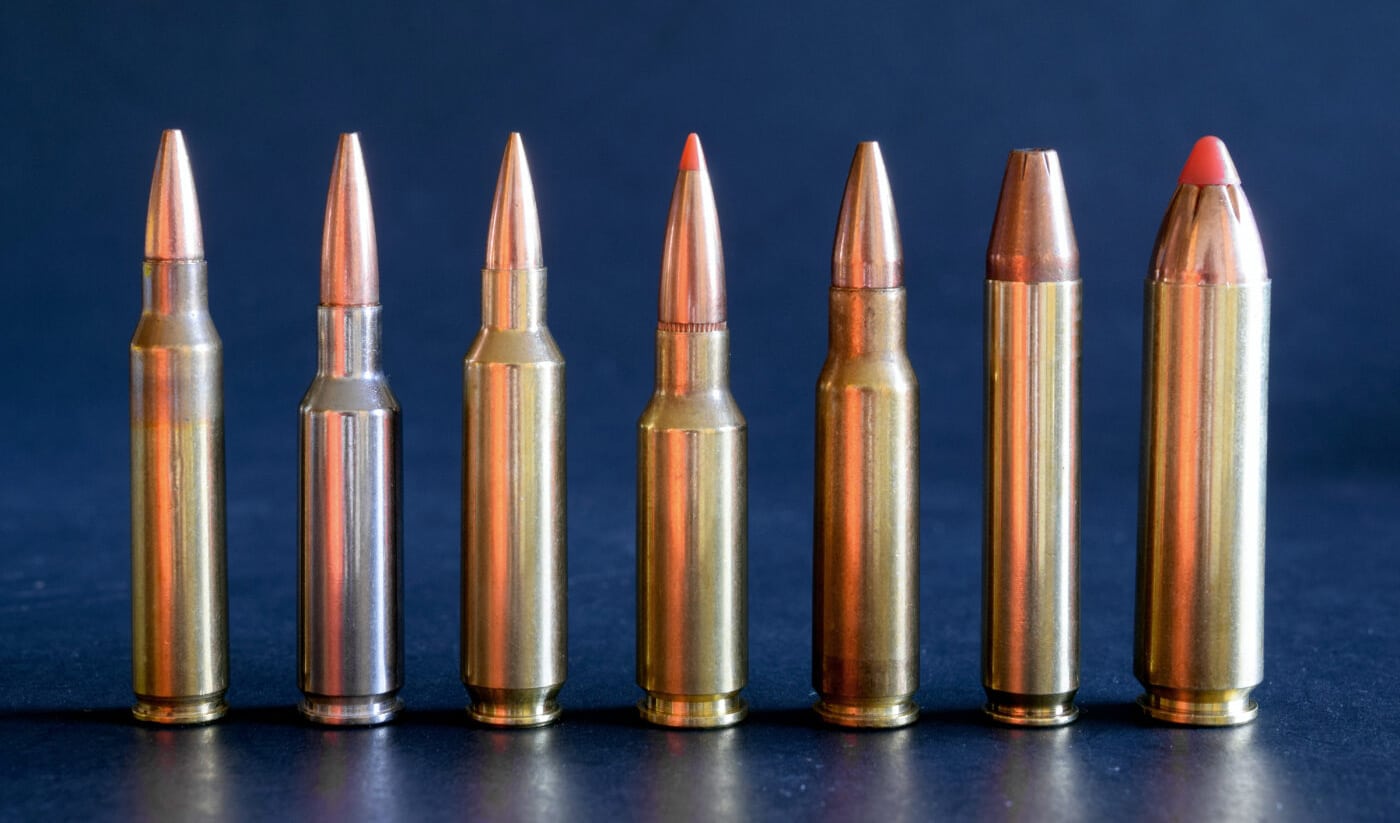
.223 and Variations
The .223 Rem cartridge arrived in 1957, specifically for the new AR-15. It sent a 55-grain bullet at 3,250 fps from a case a tad longer than the popular .222’s.
Adopted for military use in ‘64, it did its tour in Vietnam as the 5.56mm Ball cartridge, M193. A lot of ink – real and virtual – has been spilled over the round’s performance in that conflict. I’ll not rehash the issues here, but suffice it to say that it was not considered a hunting cartridge by many people.
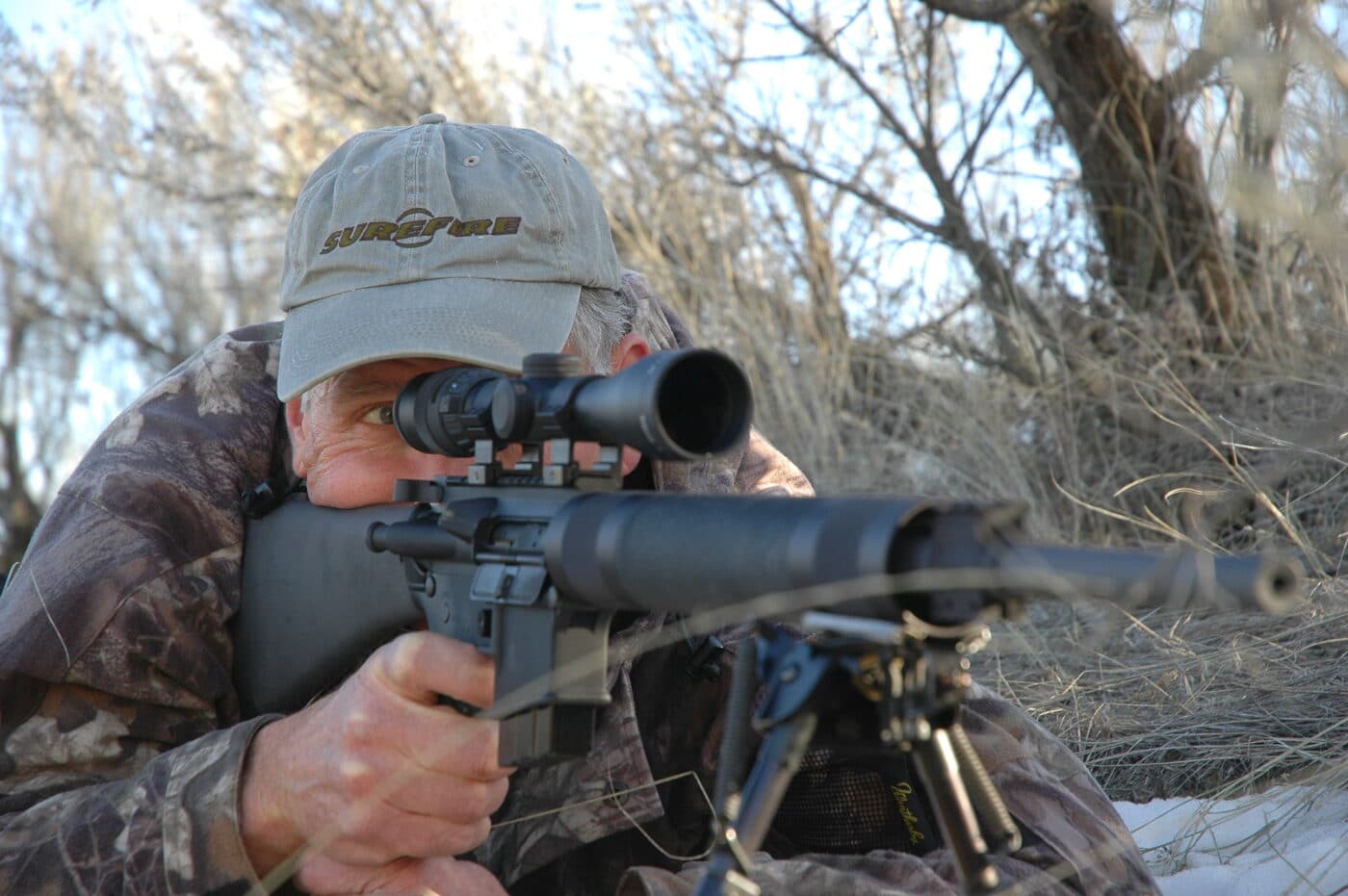
NATO approval came in 1980, with a new label: 5.56×45 NATO. A 62-grain boat-tail bullet spun with 1-in-7 rifling clocked 3,100 fps and excelled at distance accuracy. The U.S. Army dubbed this load the M855.
Case dimensions for the .223 and 5.56×45 are the same. The .223 registers 55,400 CUP (Copper Units of Pressure), per SAAMI (Sporting Arms and Ammunition Manufacturers Institute); but military 5.56 NATO loads generate 58,500. Barrels for the 5.56 commonly get longer throats.
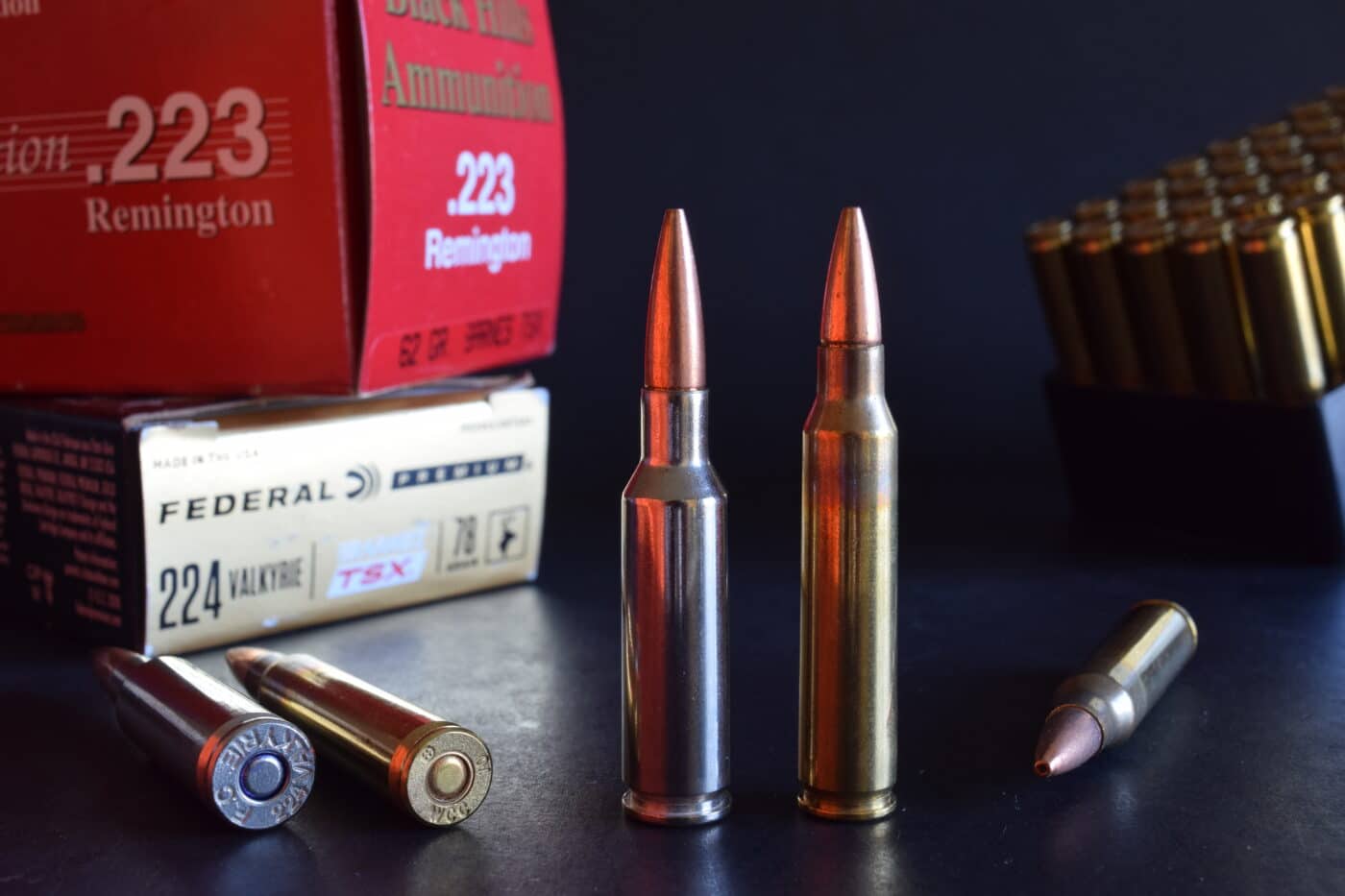
As bugs were purged from the AR-15 platform, the .223 cartridge was blessed with bullets that flew flatter, hit harder and nipped tighter groups.
I can’t name a cartridge served by a wider range of rifling spin rates! The first .223 barrels rotated bullets 1 turn in 14 inches. Not long ago I fired an early Remington 40X so rifled. Solid-copper bullets as light as 62 grains flew wildly and entered targets sideways. They were too long to stabilize with such slow twist. Nosler advises 1-in-12 for bullets as long as 60-grain Partitions. A 1-in-8 spin should work with lead-core BTHPs (boat-tail hollow-points) to 80 grains.
Now there are friskier .22s for ARs. The squat .22 Nosler holds 25 percent more powder than the .223 and welcomes long bullets with high ballistic coefficients. Federal’s .224 Valkyrie, supersonic with 90-grain Sierra bullets to 1,300 yards, is similar. Both were developed in 2017.
While many people may consider .22-caliber loads too light for larger game, they can be ideal for predator hunting with an AR-15.
The 6mm ARC
Following a spate of 6mm wildcats, Hornady’s new 6mm ARC (Advanced Rifle Cartridge) features one of the shortest cases developed for AR-15s. But with a .536 b.c., 108-grain .243 ELD Match bullets exiting at 2,750 fps still clock 1,971 fps at 500 yards! Ballistically, and especially in wind, the 6mm ARC trumps every AR-compatible .22.
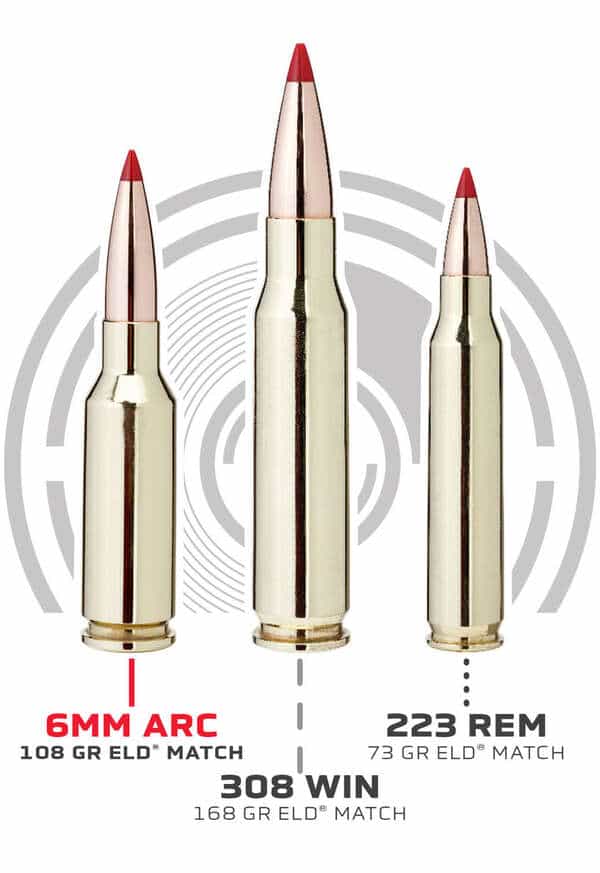
“The 6mm ARC does much of what larger cartridges can,” says Hornady, “and everything that smaller cartridges can’t.”
Beyond 6mm
Bigger bores offer up heavier bullets. For many types of hunting, a heavier bullet is desired be it from a bolt gun or an AR platform.
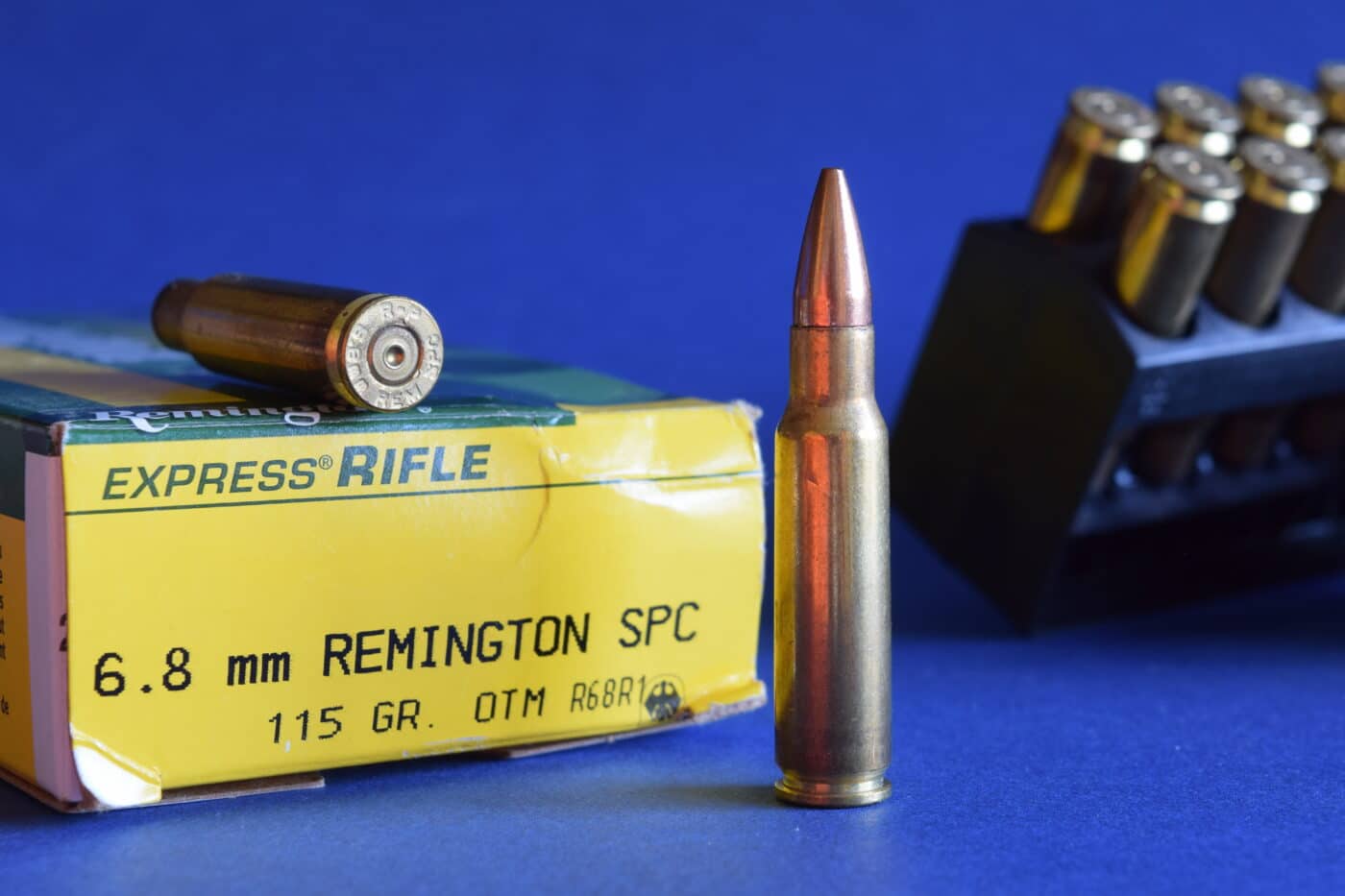
Remington’s 6.8 SPC (Special Purpose Cartridge), on the .30 Remington case, fires 115-grain .277 bullets at 2,625 fps. Deer I’ve shot with the 6.8 SPC fell quickly dead.
At its 2003 debut, the cartridge used Large Rifle primers. Small Rifle primers replaced them – “More uniform ignition!” chorused Benchrest shooters. So, be careful if you are reloading range pick-up brass.
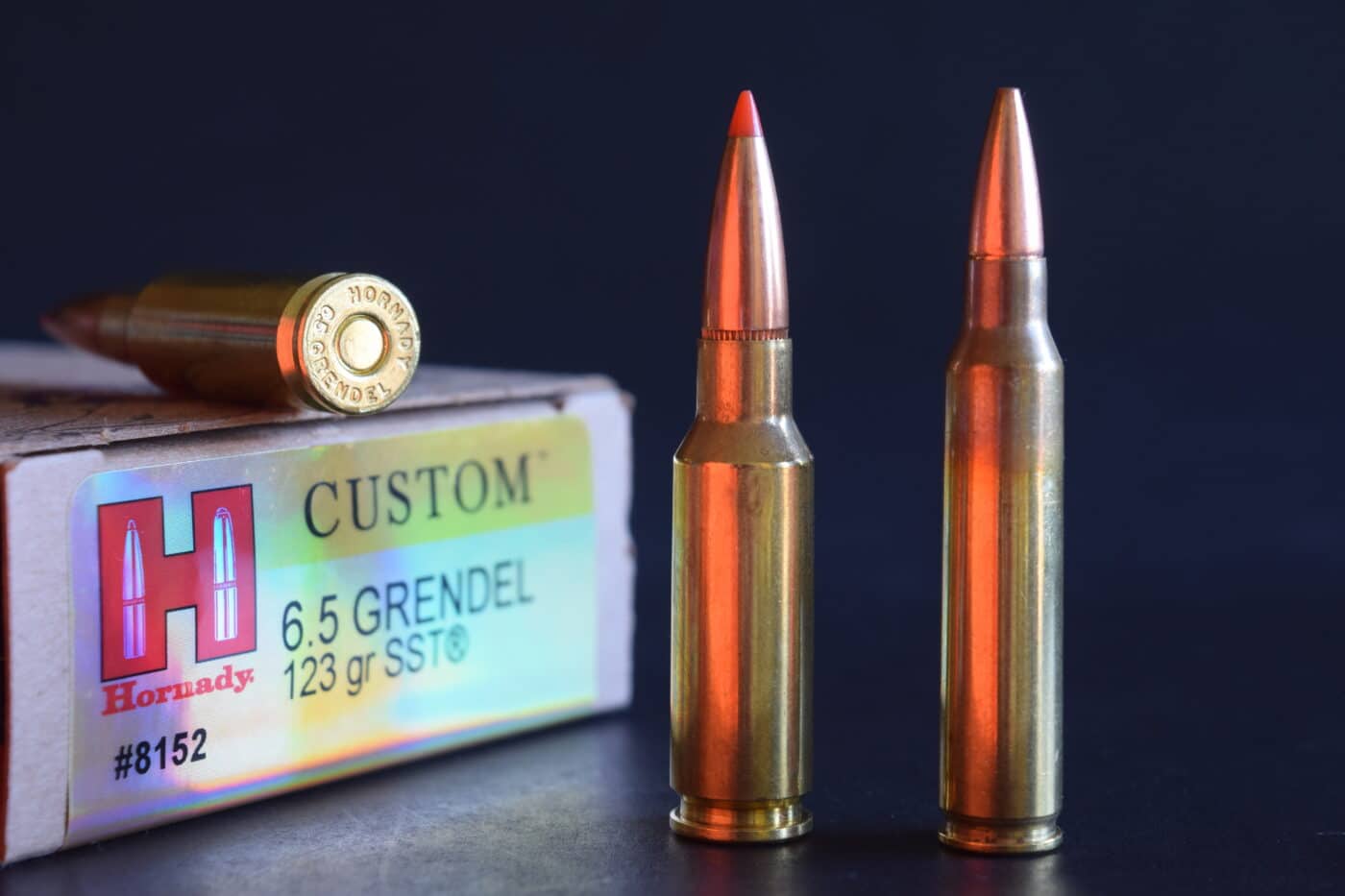
Another 2003 introduction, the 6.5 Grendel, is a necked-down 7.62×39, a 1943 Russian Army cartridge. Legions of hunters are sold on the Grendel’s 123-grain bullets at 2,610 fps.
While the Grendel is designed for the AR, the 7.62×39 is also available in the AR-15. Barrels for the 7.62×39 are nominally bored .309 or slightly larger. Hornady’s loads launch a 123-grain .310 bullet from a 20-inch barrel at 2,350 fps. It carries 840 ft-lbs to 200 yards. Handloaders using a typical .308-caliber bullet will often lose accuracy singe the projectile doesn’t engage the lands and grooves well.
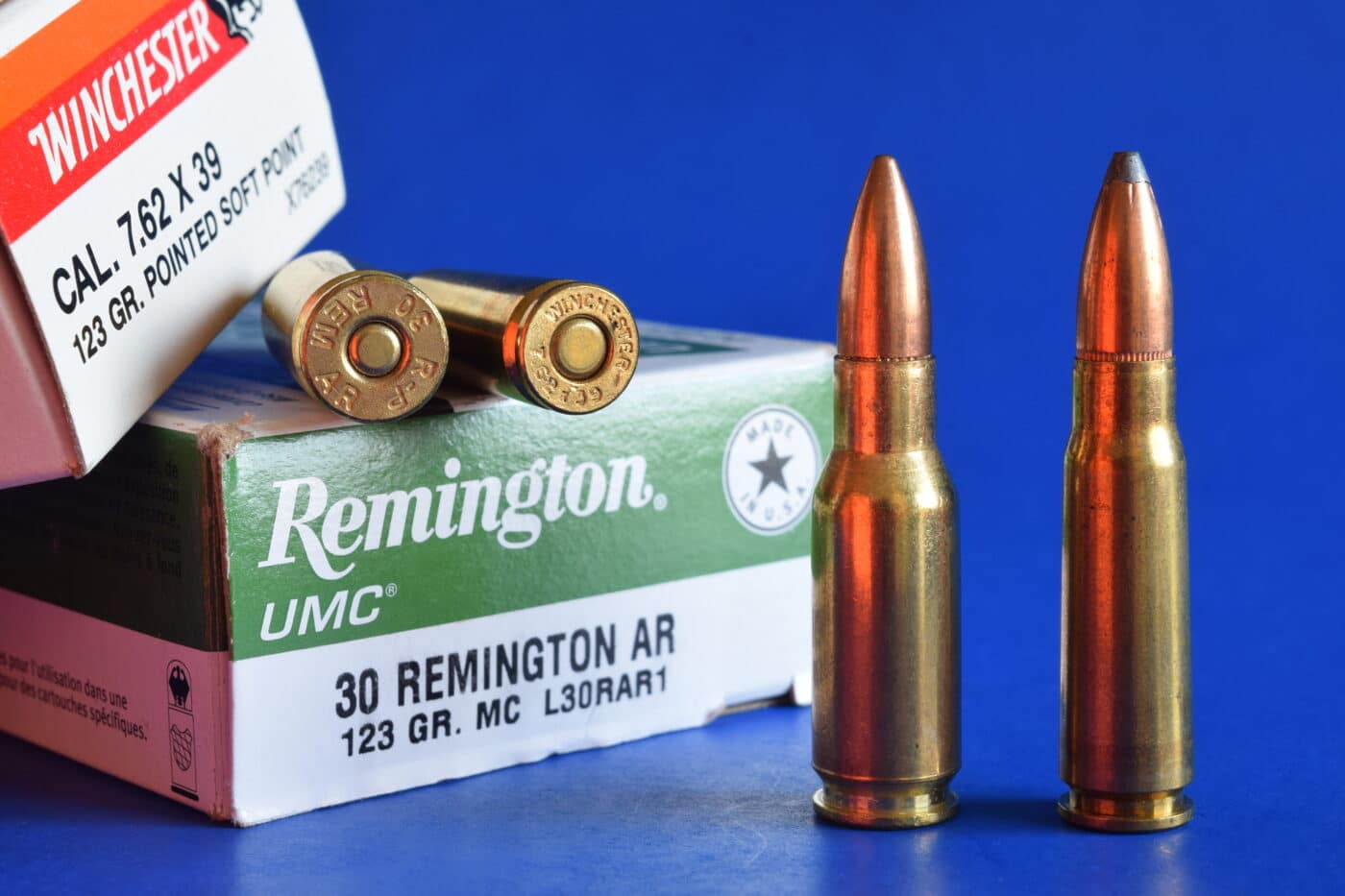
In 2011, a competitor appeared and remains very popular today for hunting and sporting applications. The .300 AAC Blackout (300 BLK) sent 110-grain bullets at 2,375 fps, 208- and 220-grain bullets at a subsonic 1,020. Mid-weight hunting bullets to 135 grains exit 16-inch barrels at about 2,100.
The 300 Blackout cartridge is very popular for hog hunting where ranges are typically less than 200 yards. Additionally, the suppression characteristics of the subsonic loads make hunting hogs with a can quite enjoyable. Make sure you read Tom McHale’s article comparing the 300 BLK vs the .223 Rem for hunting.
The .30 Remington AR, developed in 2008, has been largely overlooked. Its body is over half an inch in diameter and holds 44 grains of water. From 24-inch barrels, 125-grain bullets at 2,800 fps carry 19 percent more energy than a .30-30’s!
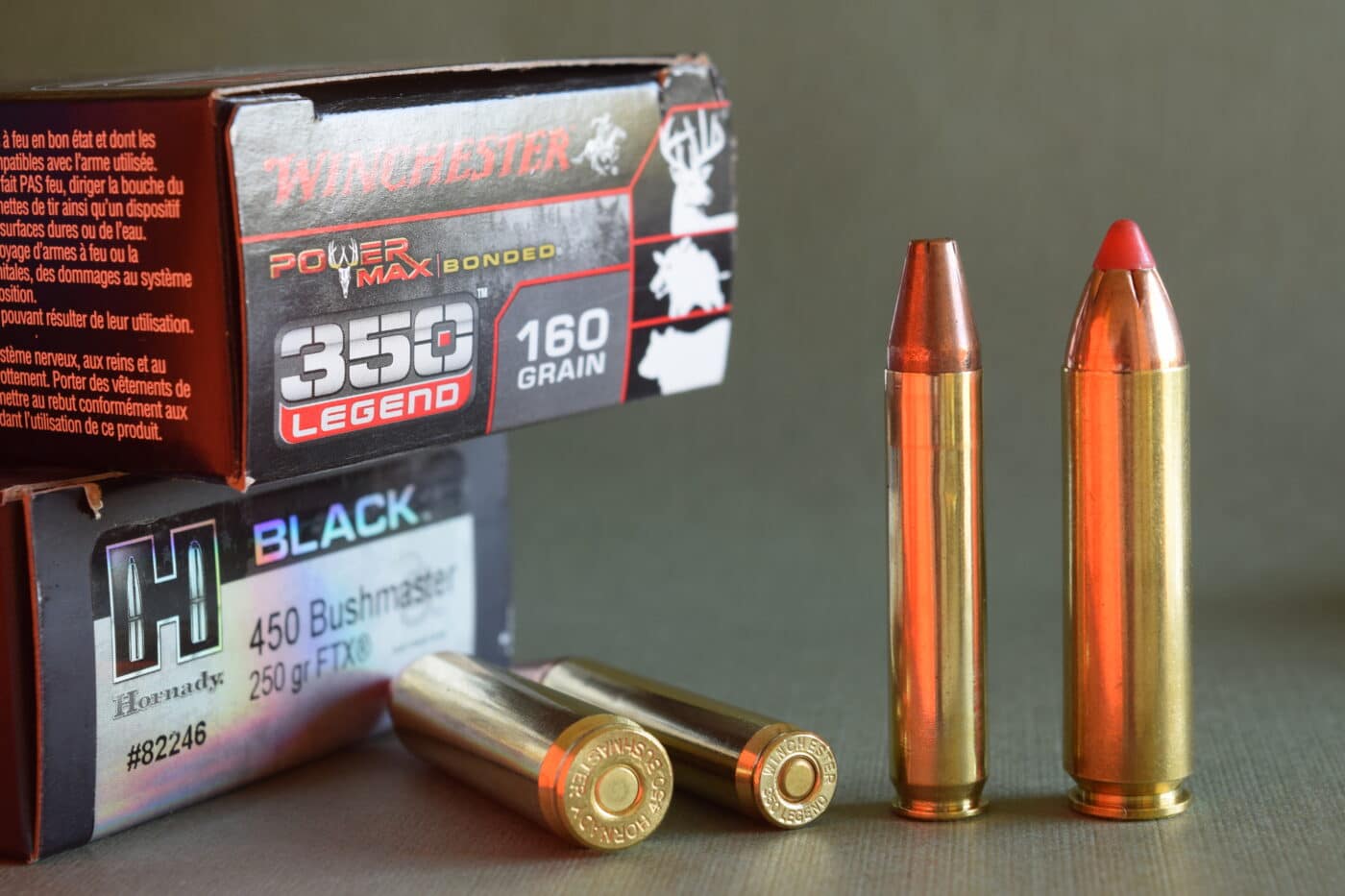
The straight case and .357 bullet of Winchester’s .350 Legend make it unique among AR rounds. Factory loaded with bullets of 150, 160 and 180 grains, and a 255-grain subsonic, the Legend is legal deer tender in some areas once designated “shotgun only.” A 180 Power-Point at 2,100 fps brings 1,240 ft-lbs to 100 yards. It’s 22 grains heavier, and more stoutly built, than Winchester JSPs for the .357 Magnum.
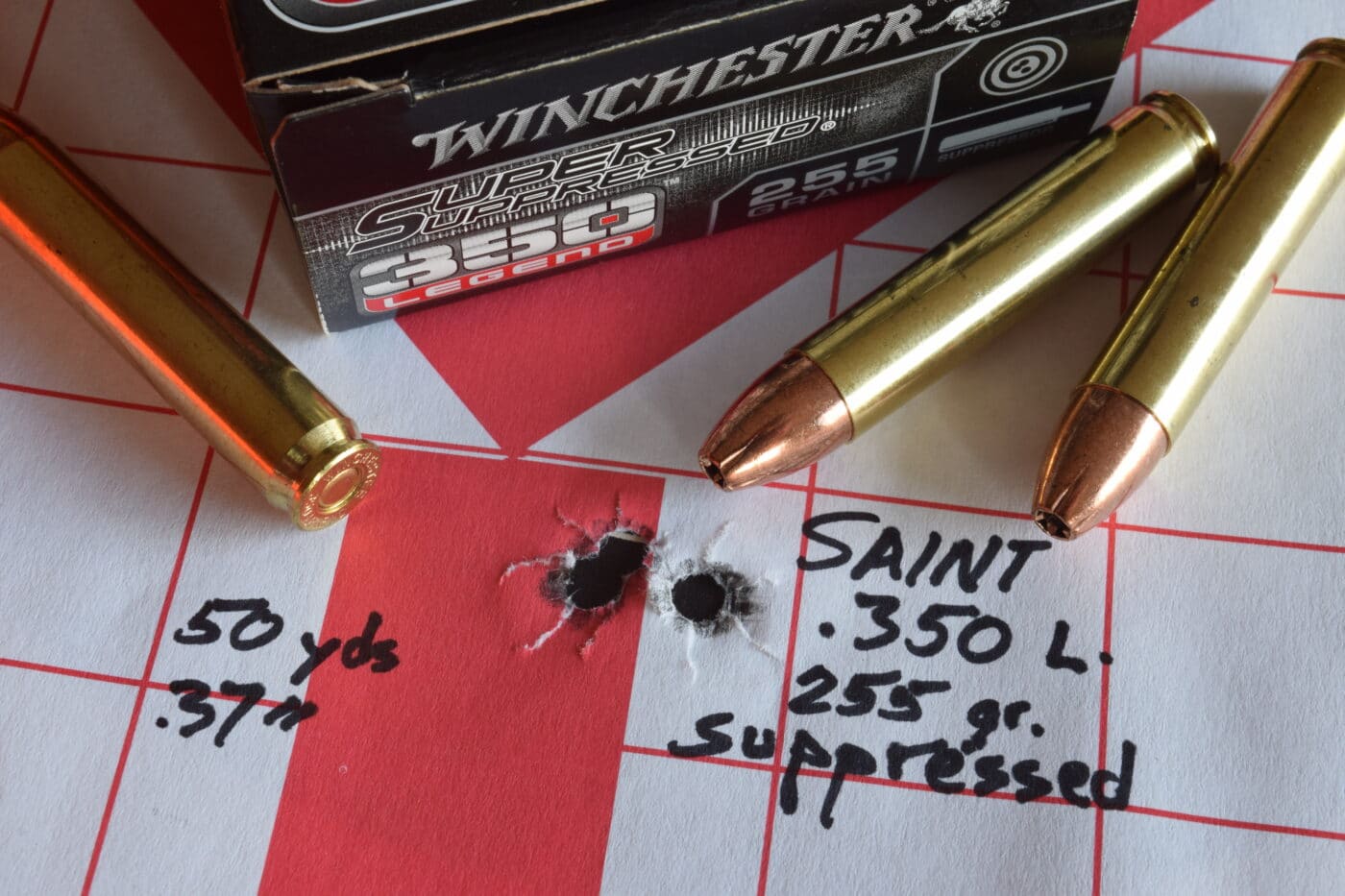
The .450 Bushmaster, introduced in 2008, also has a straight case. Factory-loaded with 250-grain .458 bullets at 2,200 fps, it will take game bigger than deer.
So too the .458 SOCOM (Special Operations Command) which hurls 405-grain Buffalo Bore hard-cast bullets at 1,600 fps from a bottleneck hull. Both deliver the punch (and kick) of .45-70 loads for modern lever rifles and far eclipse original .45-70 ammo.
Ballistic Comparisons, AR-15 Commercial Loads
The following ballistic tables were built using factory-provided information. Not all manufacturers specify test barrel length. For valid comparisons, velocity data must be adjusted to compensate for barrels of different lengths.
.223 Rem 55-grain Hornady GMX
.22 Nosler 55-grain E-Tip
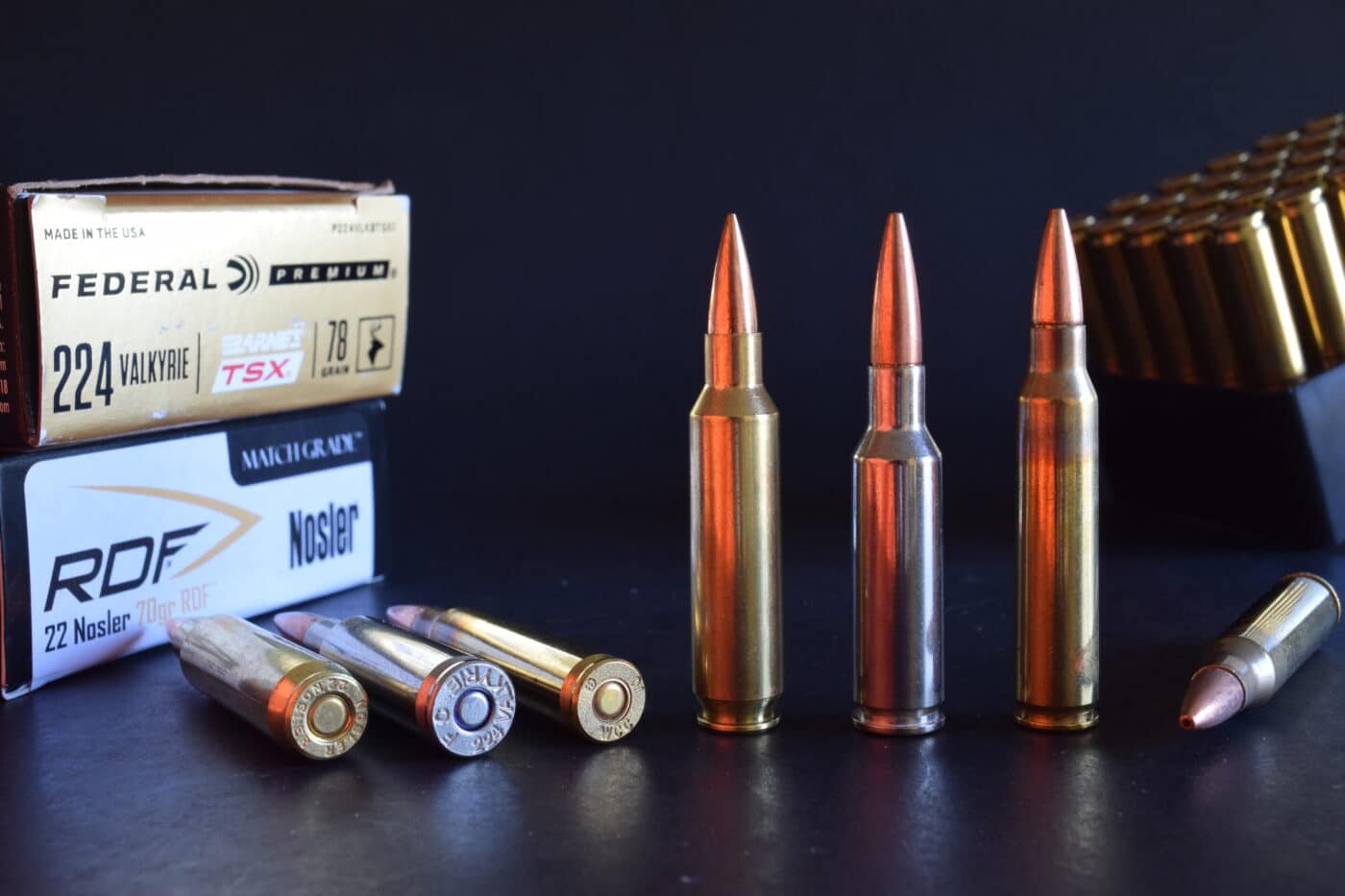
.224 Valkyrie Federal 78-grain TSX
6mm ARC Hornady 103-grain ELD-X
6.5 Grendel Hornady 123-grain SST
6.8 SPC 115-grain BTHP
7.62×39 Hornady 123-grain SST
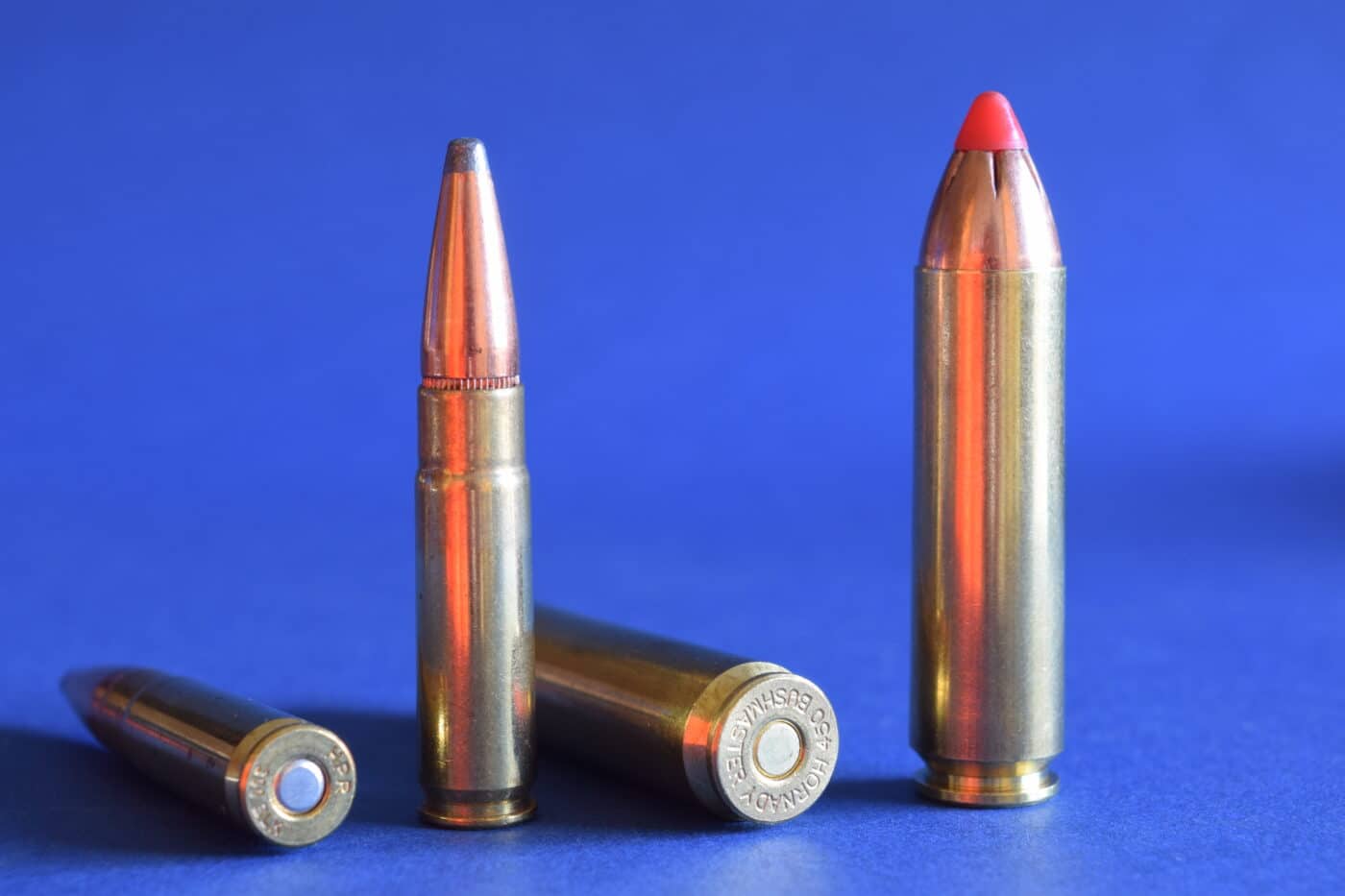
300 BLK Hornady 135-grain FTX
.30 Rem AR Remington 150-grain Core-Lokt
.350 Legend Winchester 180-grain Power Point
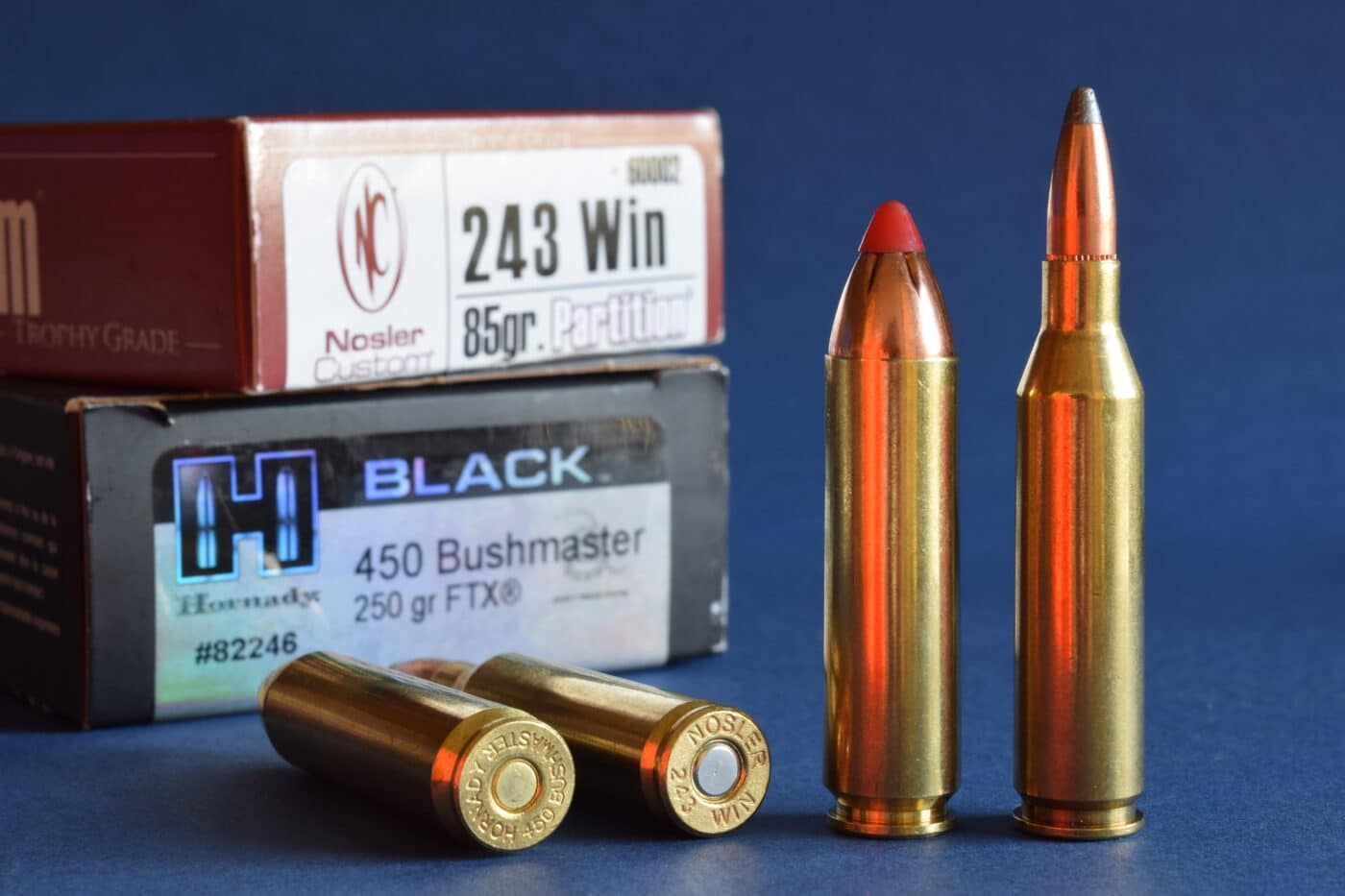
.450 Bushmaster Federal 300-grain Soft Point
.458 SOCOM Buffalo Bore 405-grain Hard Cast
So, What’s the Best?
I asked two colleagues with vast experience firing and gunsmithing AR-15s: “What if you could have just one…”
Silence ensued.
Then: “One AR? What alternate universe are you living in?” Both men conceded a ballistic edge to the 6mm ARC. Both also gave high marks to the .223, as it grew up with the rifle, benefitting from six decades of refinement and a plethora of new bullets, powders and factory loads.
“A magazine full of .223s is also lots lighter than one stuffed with 6.5s or .30s,” they agreed, adding that “the .223 and the Blackout use sturdy, cheap, military magazines.”
But not everywhere is the .223 thought a big game round. Like other centerfire .22s, it’s not legal for deer hunting where I live.
“The 6.5 Grendel is a hit with hunters around my digs,” said David. “Affordable Wolf steel-case ammo gave it a lift. Those long 110-grain FMJs, with a big air pocket up front, unhinges coyotes.” He’s used bullet of 90 to 144 grains.
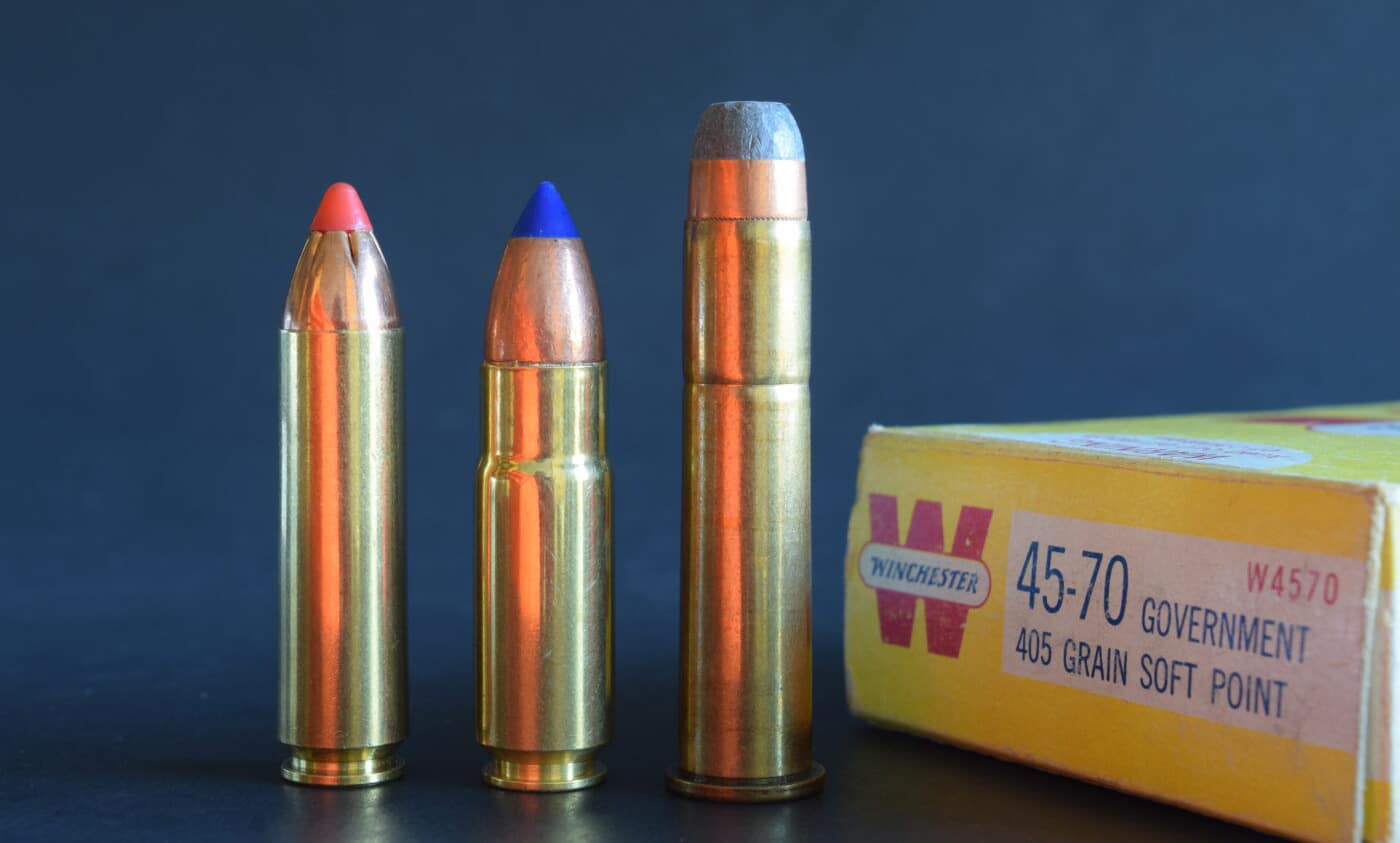
“Bill Alexander, who developed the Grendel, was right to favor 123s.” He added: “If the Grendel has a liability, it is its thin-walled magazines, necessary to fit standard wells.”
“I’ve never had a 6.5 Grendel that didn’t feed perfectly with 6.5 Grendel magazines,” Patrick told me. “But I prefer the Blackout. Very pleasant with subsonic loads. With 115s it performs like the 7.62×39 but taps a much broader range of high-quality bullets.”
Still, “best” depends on the task, and “all-around” is a vague concept until you know the extremes and can rank the attributes.
Hunting regulations matter too. Need a straight case? On this list, only the .350 Legend and .450 Bushmaster qualify! But bullets for the Bushmaster and .458 SOCOM are heavier than needed when not swatting elk or moose. You get steep arcs and brutal recoil.
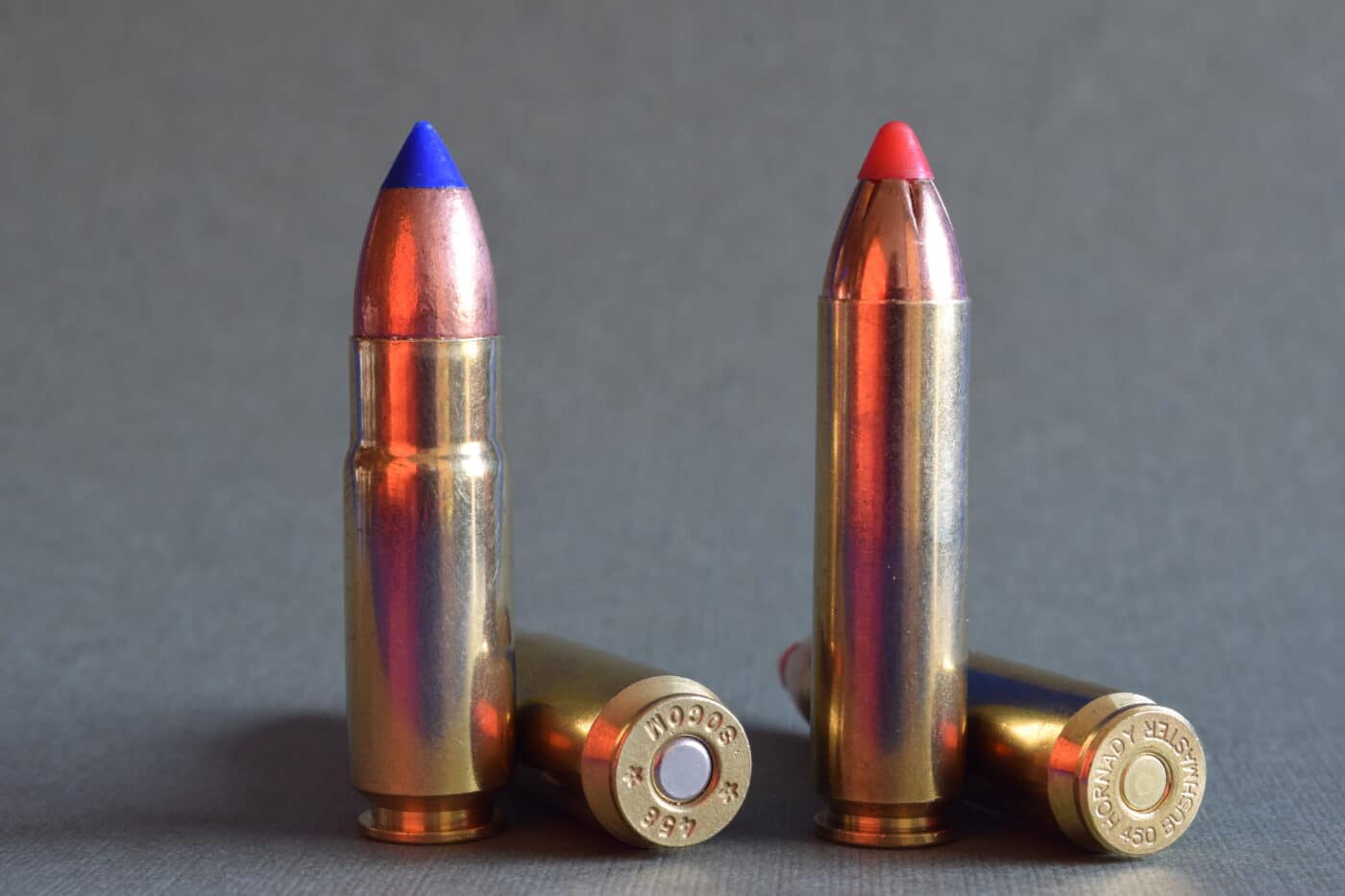
I’m sweet on the 6mm ARC, perhaps predictably. Hunting and in competition, bolt rifles were my lot for decades. I don’t use rifles at night and seldom fire them lickety-split. I don’t load them for self-defense. Cartridge weight matters not in five-round magazines.
The ARC won’t trump the Grendel or SPC at the distances I’ll fire on deer. But its efficient bullets will endanger plates too far to smack with its competition. If the ammunition is on back-order, and handloads with 100-grain hunting bullets cycle as smoothly in an AR-15 as the .223 and .300 Blackout, the 6mm ARC should top my roster as the best AR15 caliber for hunting!
Editor’s Note: Please be sure to check out The Armory Life Forum, where you can comment about our daily articles, as well as just talk guns and gear. Click the “Go To Forum Thread” link below to jump in!
Join the Discussion
Go to forum thread








